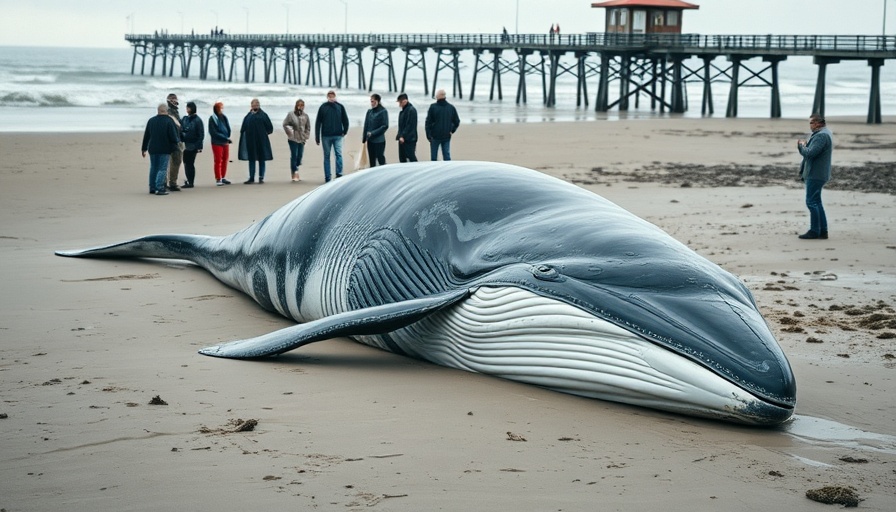
A Mysterious Discovery on Huntington Beach
On an otherwise peaceful morning on January 25, 2025, the serene shores of Huntington Beach were shaken by an unexpected and somber sight: the carcass of a young female humpback whale washed ashore. This event was particularly unusual for the locals, as humpback whales infrequently appear among the sandy beaches and azure waters of Southern California.
Understanding Humpback Whales
Humpback whales, known for their impressive acrobatic displays and haunting songs, are magnificent creatures that migrate thousands of miles. They can often be seen in warmer waters during the winter months. The reason for this particular young whale’s journey to Huntington Beach is puzzling, and the local agencies have initiated investigations to pinpoint the cause of death. Immediate analysis often involves assessing environmental factors, potential ship strikes, or possible entanglements in fishing gear.
The Impact of Marine Wildlife on Local Community
For the residents of Huntington Beach, this tragic incident serves as a reminder of the delicate relationship humans have with marine wildlife. Over recent years, there have been heightened efforts to respect and protect ocean habitats and the creatures that inhabit them. Encounters with marine animals, whether they be through dedicated whale-watching excursions or local surf sessions, are often sources of inspiration and cultural pride for the community.
Protecting our Seas: A Community Responsibility
The local response to the whale’s discovery has brought to light the critical need for education and conservation efforts. Volunteer programs aimed at cleaning beaches and protecting Florida's marine ecosystems have gained traction, emphasizing the importance of maintaining clean, healthy environments for all ocean life. These grassroots movements encourage community members, especially children, to partake in beach clean-up activities and ocean awareness programs, fostering a deep-seated respect for nature from a young age.
Future Predictions: Will We See More Encounters?
As climate change continues to affect ocean temperatures and migration patterns, experts predict we may see more marine life venturing into unconventional territories. The consequences of human activity on the environment may lead to further interactions with wildlife, which makes it all the more important to have measures in place to deal with such incidents when they occur. Citizens and local organizations can play pivotal roles in educating others and advocating for policies that prioritize marine health.
The Historical Context of Marine Life in California
California has a rich history of marine wildlife encounters. Over the last century, various species have shifted their migratory patterns due to human activity and climate influences. Historical records show a decline in certain populations, yet notable conservation success stories, such as the resurgence of the gray whale, indicate that protection efforts have the potential to help revive threatened species in the region.
A Call to Action: Engaging the Public’s Curiosity and Compassion
In conclusion, the presence of the young humpback whale on Huntington Beach serves as a signal for residents to engage more actively with their environment. By understanding the impact of marine wildlife on local ecosystems and the potential implications of human interactions, communities can become advocates for their beaches. Education efforts surround conserving and respecting marine life allow for the hopeful message that future generations may experience the majesty of these magnificent creatures thriving in a healthy ocean. This story doesn’t end here; it opens the door for ongoing discussions, community involvement, and greater awareness of marine conservation.
 Add Row
Add Row  Add
Add 




Write A Comment